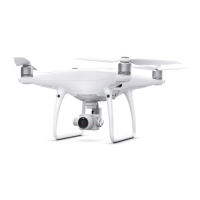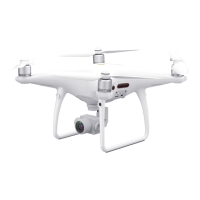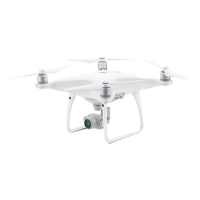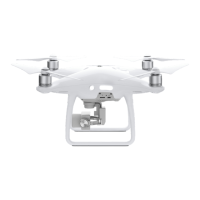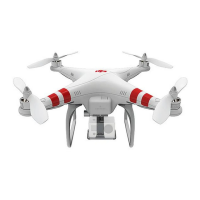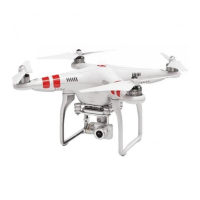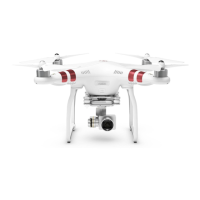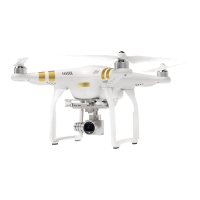©
2018 DJI All Rights Reserved.
13
Aircraft
Profile
The Phantom 4 RTK aircraft includes a flight controller, a communication system, a positioning system,
a propulsion system and an Intelligent Flight Battery. This section describes the functions of these
components.
Flight Modes
The Phantom 4 RTK uses a DJI dedicated ight controller, which provides the ight modes below:
P-mode (Positioning): P-mode works best when the GNSS signal is strong. The aircraft utilizes the GNSS /
RTK module and Vision System to automatically stabilize itself, navigate between obstacles, and perform a
Photogrammetry or Waypoint Flight operation.
When the GNSS signal is strong, the aircraft uses GNSS for positioning. When RTK module is enabled and
the dierential data transmission is good, it provides centimeter-level positioning. When the GNSS signal is
weak and the lighting conditions are sucient, the aircraft uses Vision System for positioning.
When the forward obstacle sensing is enabled and lighting conditions are sucient, the maximum ight
attitude angle is 25° with a maximum ight speed of 31 mph (50 kph). When forward obstacle sensing is
disabled, the maximum ight attitude angle is 35° and the maximum ight speed is 36 mph (58 kph).
A-mode (Attitude): GNSS and Vision System are NOT used for positioning and aircraft can only maintain
altitude using the barometer. It enters A-mode only when there is weak GNSS signal or when the compass
experiences interference where the Vision System is unavailable.
Attitude Mode Warning
The aircraft will y in P-mode by default. It enters A-mode only when there is weak GNSS signal or when the
compass experiences interference where the Vision System is unavailable.
In A-mode, the Vision System and some advanced features are disabled. Therefore, the aircraft cannot
position or auto-brake in this mode and is easily aected by its surroundings, which may result in horizontal
shifting. Use the remote controller to position the aircraft.
Maneuvering the aircraft in A-mode can be dicult. Avoid ying in areas where GNSS signal is weak, or
in conned spaces. The aircraft will otherwise be forced to enter A-mode, leading to potential ight risks,
please land it in a safe place as soon as possible.
